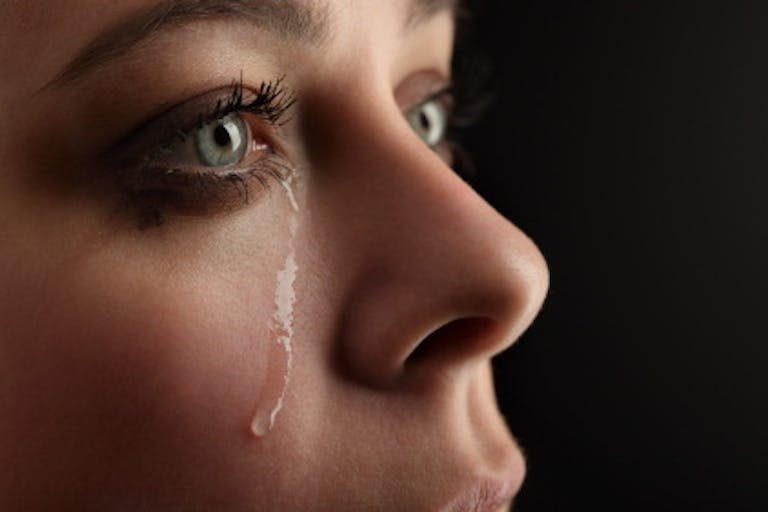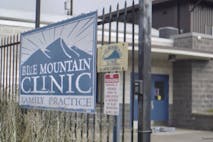
Live Action News' Top 10 of 2025: Defending human life and dignity, beginning to end
Kelli Keane
·
Pro-choice woman talks about her “brutal” abortion experience
On July 2, the New York Times ran an article by a young woman who had an abortion. Lisa Selin Davis, a self-proclaimed feminist, describes an abortion she had in the mid-90s. A gung ho pro-choicer, she did not expect her abortion to be difficult or upsetting.
Pregnant from a relationship with a married man, Davis had no qualms about getting an abortion:
This [the abortion decision] didn’t seem as big a problem to me as it might have for other young women. This was the mid-1990s. Reared on protest marches, I had a NOW poster affixed to my bedroom wall. I was an unwavering believer in the fierce rhetoric of pro-choice. And now: a poster child.
She even saw the abortion is an artistic opportunity:
In addition, in college I had essentially majored in experimental feminist video. I could make art out of anything.
Davis called her boss, who referred her to an abortion clinic. Though slightly put off by the price of the abortion ($350) Davis seemed to be excited about the opportunity to have an abortion and make her film:
The money intimidated me but the mission didn’t. Not only was this the right I’d marched for, it was an opportunity. It could provide material for the kinds of film I’d voraciously consumed in college, in which women transformed their most traumatic experiences into emotionally stirring and awareness-raising images: Margie Strosser’s “Rape Stories” or “The Body Beautiful” by Ngozi Onwurah, about a mother undergoing a radical mastectomy. An abortion today, a debut at Sundance tomorrow.
So, dreaming of fame, she eagerly set forth to take advantage of her “right to choose.”
She hired a driver, and when he found out she was having an abortion, he pleaded with her to reconsider.
Davis relays the conversation:
“I have to go to the doctor,” I kept telling him.
“Why? You don’t look sick.”
“I have to have a procedure.”
“What? What procedure?”
Finally, I told him. Why not? I was proud and un-conflicted. I was exercising my right. I was making a video.
He pulled over to the side of the road, right there on the Brooklyn Bridge — not only illegal but dangerous. “Please don’t kill the baby,” he said. “Please don’t kill the baby.”
“What are you doing?”
“Don’t kill the baby.” He wouldn’t move the car, though horns blared all around us.
“Keep driving! I have an appointment!” I shook his headrest. This was not part of the script.
“Please don’t kill the baby,” he said again, turning around to face me. He had beautiful big brown eyes — almost black. “I will take care of you and the baby. I work two jobs.”
“Drive,” I told him.
“You are going by yourself?” he asked.
I said, “Drive.”
He drove.
Davis squandered the opportunity to change her mind and rebuffed the cabdriver’s offer of help. She was still determined to have her abortion, still viewing it as a feminist right and a creative opportunity. When she got to the clinic:
At the clinic’s counter, the receptionist asked me what I’d come for. I said, “Um …”
“Termination of pregnancy?” she asked in her best would-you-like-fries-with-that voice. I nodded.
Davis then says:
They gave me pamphlets, a paper gown and paper slippers. They sat me in a room filled with women, one of whom told me she’d been there eight times before. “They used to have terry cloth,” she said, lifting her toes in the paper slippers. It had never occurred to me that people had serial abortions, but it confirmed my expectations: abortion — safe, legal, no big deal.
Yet the stark reality of the situation, the indifference of the clinic worker, and the despair of the women around her began to trouble Davis. She began to question whether her abortion would really be such an easy thing to go through:
Yet as I looked around the room, my expectations began to shift. This wasn’t the liberating environment I’d expected to enter. The uncomplicated message of those protests led me to think that legal abortion would be light. Lite. I wasn’t prepared for the saturnine cloudiness of the room, all those sad-looking women burying their faces in tabloid magazines.
The video camera stayed sleeping in my lap.
The clinic took Davis and 10 other women into a room and asked them to choose between local and general anesthesia. Davis originally asked to have local anesthesia, but the clinic told her they did not allow it. When she told them that she wanted to film her abortion, they told her at once that it would not be possible. Taping an abortion was not permitted “for legal reasons.”
One wonders what those “legal reasons” were. With the clinic trying to hide the reality of the procedure from Davis? Were they trying to hide the gruesome and grisly nature of abortion from their patients and from the public? They did not want anyone to see the operation. Davis never says how far along she was, but at just seven weeks the unborn baby has fingers and toes. After an abortion, the baby, even at this early stage, is ripped apart and leaves behind recognizable body parts. So it is not surprising that the clinic workers wanted to hide the gruesome details from Davis and her potential audience.
Article continues below
Dear Reader,
In 2026, Live Action is heading straight where the battle is fiercest: college campuses.
We have a bold initiative to establish 100 Live Action campus chapters within the next year, and your partnership will make it a success!
Your support today will help train and equip young leaders, bring Live Action’s educational content into academic environments, host on-campus events and debates, and empower students to challenge the pro-abortion status quo with truth and compassion.
Invest in pro-life grassroots outreach and cultural formation with your TRIPLED year-end gift!
The clinic offered no counseling to Davis, no opportunity to examine her motives. They did not ask her if she was sure abortion was what she wanted to do; they did not inform her about fetal development or the emotional and physical risks of the procedure, they didn’t explain to her what her options were. There did not seem to be any “informed consent.”
Davis describes being prepped for the procedure:
My hands shook, the camera wobbling in my grasp. I was freezing inside my paper gown.
She describes how she felt when she woke up, her baby gone:
The first thing I thought when I awoke from the anesthesia was that I’d never be pregnant again, that I had just squandered my only chance at motherhood. I was sobbing — I had arisen from the depths of the medication this way — as they rolled me into the recovery room where the other women were lying, almost all of them with a friend or partner or relative to brush their hair back or offer them ice chips. I could not stop crying, big heaves and gulps of it. The nurse came over at first to soothe me and then to quiet me.
“You’re upsetting the other girls,” she said.
“It hurts.”
She sent the doctor over. “Sometimes we have to massage the womb,” he said, inserting his hand inside me and pressing. This did not stop the crying, but eventually it stopped the pain.
Despite going in with a gung ho pro-choice attitude, Davis had come to realize that abortion was not an easy thing for a woman to go through. She calls abortion a “brutal choice.”
Or, at least, it stopped the physical pain. The begging cabdriver and the woman on her ninth abortion and the shocking suction in my womb: It was too traumatic for me to make art of. Or maybe it was just that I wasn’t a good enough artist to transform that level of trauma into something that others could learn from and use. I had been taught that a woman’s right to choose was the most important thing to fight for, but I hadn’t known what a brutal choice it was.
Davis says that when she got home, her hands were still shaking.
This “brutal choice,” which Davis had fought for and believed in, still seems to haunt her 20 years later. She remains pro-choice, however:
Abortion rights, yes, I’ll always support them, but even all these years later, I wish the motto wasn’t “Never again,” but “Avoid this if there’s any way you possibly can, even if it’s legal, because it’s awful.”
She wishes her pro-choice friends had prepared her for how difficult the abortion would be:
I wish that someone had alerted me to the harshness of the experience, acknowledged the layers of regret that built and fell away as the months and years passed. I want my daughters to have the option of safe and legal abortion, of course. I just don’t want them to have to use it.
Davis’s story conveys the tragic impact abortion can have even on a woman who goes into the clinic without doubts or ambivalence. Deep down, Davis may have known that her baby had been taken away from her. Two decades later, she remembers her abortion as a traumatic experience in her life.
I am reminded of this quote by a clinic worker named Steph Herold. Herold was venting her frustration that most of her patients did not become proabortion activists:
We need our patients, who we do everything for, to stand up for us. We don’t need them to tell their abortion stories to everyone they know, although of course that would be great. We need them to fight for abortion access in whatever way makes sense to them. If one in 3 US women has an abortion by age 45, where are these women? Why don’t they stand up for us?(1)
While the one in three statistic may or may not be accurate, it is true that many women have abortions, and that most of these women do not go on to be hard-core pro-choice activists. Many women end up regretting their abortions, and even those that never admit to postabortion regret seem to want to put the experience behind them. They want to forget about their abortions; they do not become diehard abortion rights advocates (though there are exceptions.)
Herold seems hardened to the reality of abortion, unaware of how difficult and traumatic it can be for women. She is frustrated that more postabortion women do not rally to the pro-choice cause – and, in her frustration, doesn’t acknowledge the possibility that many of her patients may have found their abortions to be traumatic and difficult.
Davis’s article shows that abortion can be a very negative experience for a woman to go through, even if she is pro-choice.
Sarah Erdreich Generation Roe: inside the Future of the Pro-Choice Movement (New York: Seven Stories Press, 2013) 175
Live Action News is pro-life news and commentary from a pro-life perspective.
Contact editor@liveaction.org for questions, corrections, or if you are seeking permission to reprint any Live Action News content.
Guest Articles: To submit a guest article to Live Action News, email editor@liveaction.org with an attached Word document of 800-1000 words. Please also attach any photos relevant to your submission if applicable. If your submission is accepted for publication, you will be notified within three weeks. Guest articles are not compensated (see our Open License Agreement). Thank you for your interest in Live Action News!

Kelli Keane
·
Analysis
Cassy Cooke
·
Analysis
Bridget Sielicki
·
Analysis
Cassy Cooke
·
Analysis
Cassy Cooke
·
Analysis
Cassy Cooke
·
Guest Column
Sarah Terzo
·
Abortion Pill
Sarah Terzo
·
Guest Column
Sarah Terzo
·
Guest Column
Sarah Terzo
·
Guest Column
Sarah Terzo
·